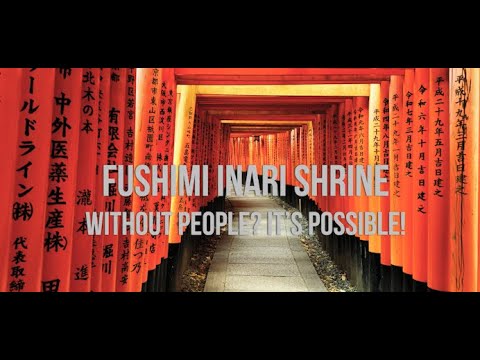Fushimi Inari Shrine – best way to visit | Kyoto, Japan, 4k
Welcome to Fushimi Inaritisha, one of Japan’s most iconic and spiritually rich sites. I’m Anna and today I’m excited to share my experience of this incredible place with you. Located in southern Kyoto, this ancient Shinto shrine was founded in 7-eleven AD, making it over 1,300 years old. It’s dedicated to Inari, the deity of rice, prosperity, and business. That’s why thousands of businesses and individuals have donated the famous Vermillion Tori gates, a powerful symbol of gratitude and hope for success. But before we dive into the details, let’s start from the beginning. When in Kyoto, I highly recommend commuting by bike. It gives you flexibility and helps you avoid the crowds. There’s a bike parking on the right of the entrance to Fushimi Inari. Check the link in the description below. We arrived at Fushimi Inari at 6:30 in the morning, and there were already groups of tourists. We passed through the impressive Roman gate and headed straight to the famous thousand Tori, a long series of red Tory gates that have become the trademark of Fushimi Inarites and it’s winding through the scared forest of Mount Inari. You’ll also see many fox statues here as they are believed to be messengers of Inari. Fushimi Inari has about 4,000 Tori gates and roughly 30 subshrines, temples, and stone altars, all open 24 hours a day. While hiking, the full 4 km trail to the summit takes around 2 hours. Most travelers spend just 1 hour visiting the main shrine and the famous San Boni tunnel, which you might recognize from the movie Memories of a Geisha. Most people stop right at the entrance to take pictures, but trust me, keep walking. You’ll find plenty of beautiful, less crowded spots as you go further. On our way to the top, we stopped at Fushig Okami Shrine to soak in the peaceful atmosphere. After that, we continued upward. As we climbed, the Tori gates become less dense and you’ll reach Yotssuji intersection roughly halfway up the mountain. For us, it was a perfect spot to have our breakfast. From here, you’ll get beautiful views of Kyoto and the option to take a circular route to the summit. Many people stop here since the path beyond offers less variation. But if you keep going, you’ll enjoy even quieter moments. On the upper parts of the trail, there were far fewer tourists. It felt like a privilege to enjoy these iconic gates in silence. A rare experience in such a popular location. Personally, I couldn’t imagine spending 3 hours navigating crowds from the base to the summit and back. That’s why I strongly recommend visiting early in the morning. You can even take a relaxing breakfast break midway to truly enjoy the mountain atmosphere. Thanks for watching. Don’t forget to subscribe to my channel, leave a comment, and stay tuned for more travel experiences from around the world.
⛩️Join me on a journey through Fushimi Inari Taisha in Kyoto and what you should know before going there🌿
Chapters:
00:00 -Intro
00:25 – brief history of Fushimi Inari Taisha
0:050 – Best way of getting there
01:08 – Arriving at Fushimi Inari and the first part of the climb
01:37 – basic info you need to know about the shrine (avoiding crowds? Listen to this part!)
02:09 – Fukushige Okami Shrine
02:27 – Yotsutsuji ( four-forked) junction, viewing and breakfast point
03:04 – Upper parts of trails
03:40 – Outro
Parking spot next to the entrance:
https://www.cyclingkyoto.com/places/fushimi-inari-shrine/
Map of Mt. Inari:
http://www.ganrikisya.com/foreign_english/inariyama_map.html
Subscribe to this channel, click here: / @tripbytormenta
Footage recorded in March 2025
Drone: DJI Mini Pro 4
Camera: GoPro 9 black
iPhone 16 Pro
Music: https://www.epidemicsound.com/


AloJapan.com